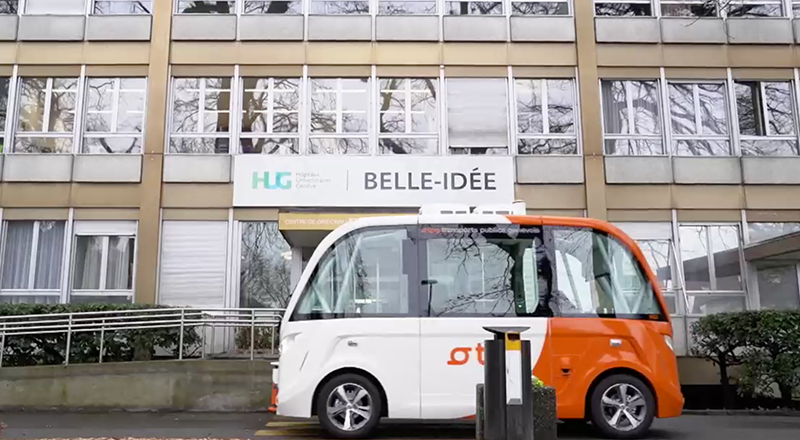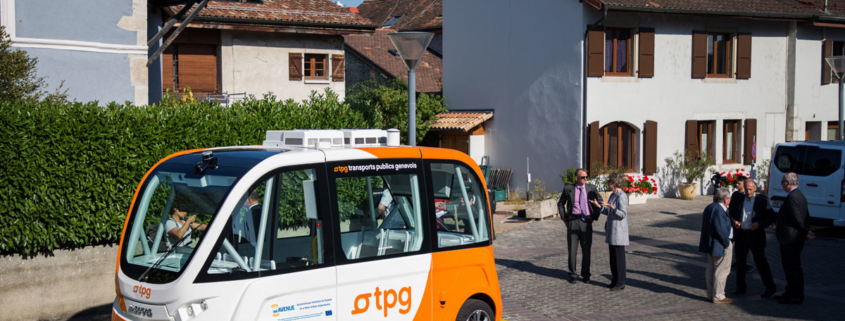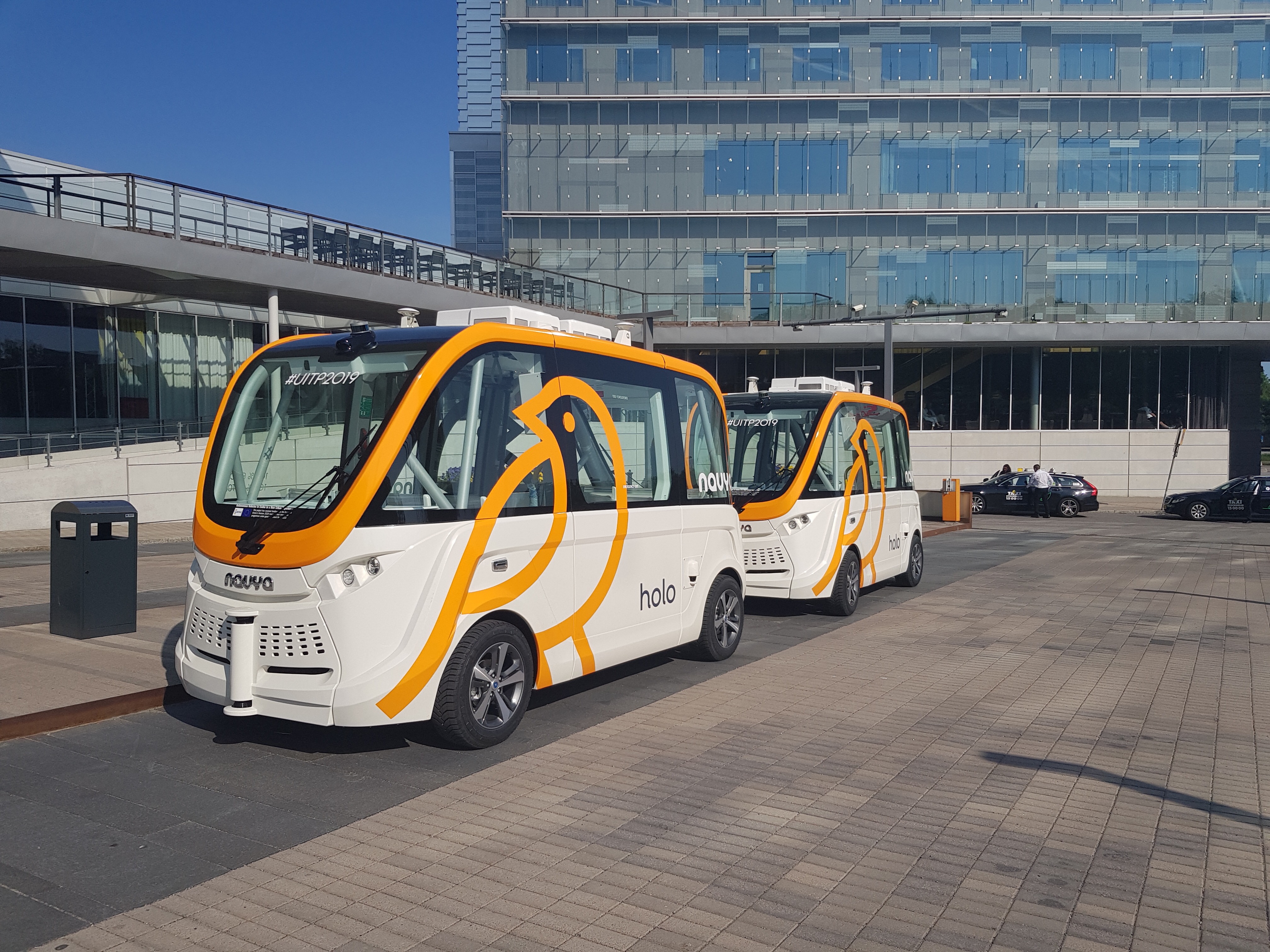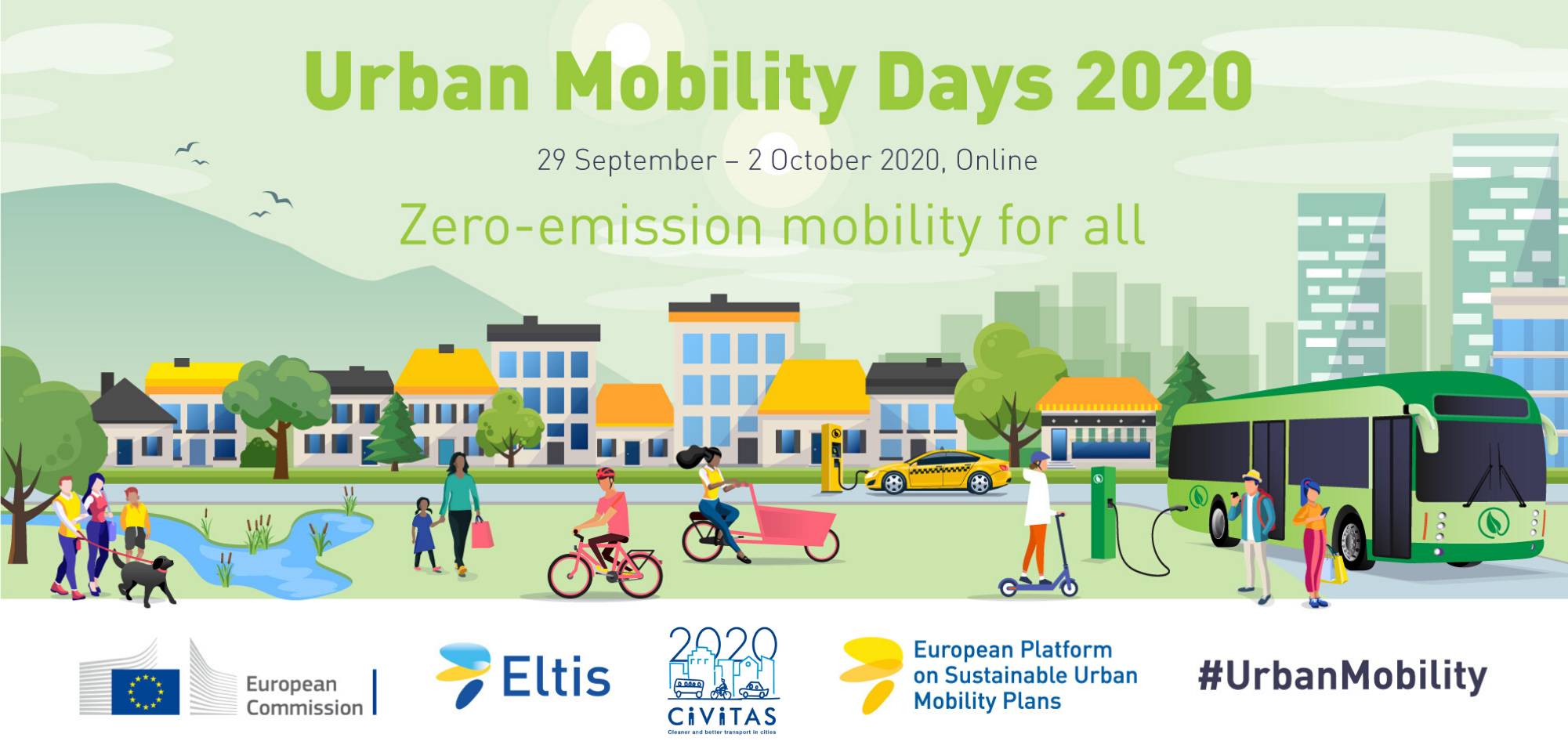Event: TPG live demo presented at Belle-Idee site
/in Bestmile, Event, Geneva, Mobile Thinking, News, TPG, Université de Genève, Video /by Dimitri KonstantasOur autonomous public transport shuttles on-demand, door-to-door service at the Belle-Idee demonstrator site is almost ready for full deployment!
Check out the Transports Publics Genevois (TPG) live demo presented at the H2020 AVENUE project general meeting here:
New Scientific Article: Introducing Automated Shuttles in the Public Transport of European Cities: The Case of the AVENUE Project
/in EU, HS PF, News, Research /by Dimitri KonstantasAbstract: Our current mobility paradigm has reached a tipping point. Individual mobility, based on cheap fossil fuel and high CO2 emissions no longer meet the needs posed by a globally increasing demand for passenger mobility, neither corresponds to the climate agenda.
In this regard, innovations and technologies play an important role to shape the future mobility and provide solutions for more efficient, affordable, accessible, and sustainable mobility in cities.
This paper aims to explore how innovations on mobility, such as shared automated electric vehicles (SAEV) can contribute to a positive change in the mobility paradigm and sustainable mobility, and to this end, which are the current obstacles to be overcome and the key factors related to SAEV’s deployment. Thereby, it presents the case of the Autonomous Vehicles to Evolve to a New Urban Experience – ‘AVENUE’, a European project that has implemented pilot trials to test automated shuttles within the public transport of Lyon, Geneva, Luxembourg, and Copenhagen.
Based on primary data from the project and secondary data from AVENUE public reports, the study reports on the project implementation in the four cities and first learnings through obstacles and key factors to accelerate the deployment of automated shuttles in cities. It contributes to the discussion on technical & operational, social, and legal obstacles as well as key elements in the deployment of automated shuttles.
Introducing Automated Shuttles in the Public Transport of European Cities: The Case of the AVENUE Project
Eliane Horschutz Nemoto, Ines Jaroudi, Guy Fournier
Book: Advances in Intelligent Systems and Computing, Advances in Mobility as a Service Systems”
Date: 4 November 2020, DOI: 10.1007/978-3-030-61075-3_27
* Note: This is an extended version of the conference paper in CSUM2020
Download: Publisher’s version (Subscription required) | Author’s version (Green Open Access)
Video: H2020 AVENUE Geneva TPG Operator Experience
/in Announcement, Geneva, News, TPG, Video /by Dimitri KonstantasMeet Melissa, a Transports Publics Genevois (TPG) operator in Geneva and learn about her experience with the operation of the deployed autonomous shuttles in her city.
Event: The 6th AVENUE General Meeting
/in Consortium, EU, Event, News /by Dimitri KonstantasOn the 29th and 30th of October 2020, the AVENUE consortium held the 6th General Meeting of the project on the Zoom video conferencing platform. Various topics were discussed including the integration of the 2 new replication sites.
A life on-line demo from TPG, at the under development Belle-Idee site, showed us that autonomous vehicles for door-to-door public transport are practically there.
Announcement: Holo shuttles reached milestone of 50.000 driven km
/in Announcement, Copenhagen, Holo, News /by Dimitri KonstantasThumbs up to AVENUE partner Holo for reaching the milestone of 50.000 driven km with the shuttles this week!
Event: AVENUE @ European Commission’s Urban Mobility Days 2020
/in Brussels, EU, Event, News, Université de Genève /by Dimitri KonstantasOn the 1st of October 2020, Prof. Dimitri Konstantas (H2020 AVENUE Coordinator) presented the project at the European Commission’s Urban Mobility Days 2020.
Program and slides can be found at: https://www.eltis.org/in-brief/news/urban-mobility-days-2020-session-slides
Video of AVENUE’s presentation at the event can be found below:
New Scientific Article: Audio-Based Event Detection at Different SNR Settings Using Two-Dimensional Spectrogram Magnitude Representations
/in CERTH, EU, News, Research /by Dimitri KonstantasAbstract: Audio-based event detection poses a number of different challenges that are not encountered in other fields, such as image detection. Challenges such as ambient noise, low Signal-to-Noise Ratio (SNR) and microphone distance are not yet fully understood. If the multimodal approaches are to become better in a range of fields of interest, audio analysis will have to play an integral part. Event recognition in autonomous vehicles (AVs) is such a field at a nascent stage that can especially leverage solely on audio or can be part of the multimodal approach. In this manuscript, an extensive analysis focused on the comparison of different magnitude representations of the raw audio is presented. The data on which the analysis is carried out is part of the publicly available MIVIA Audio Events dataset. Single channel Short-Time Fourier Transform (STFT), mel-scale and Mel-Frequency Cepstral Coefficients (MFCCs) spectrogram representations are used. Furthermore, aggregation methods of the aforementioned spectrogram representations are examined; the feature concatenation compared to the stacking of features as separate channels. The effect of the SNR on recognition accuracy and the generalization of the proposed methods on datasets that were both seen and not seen during training are studied and reported.
Audio-Based Event Detection at Different SNR Settings Using Two-Dimensional Spectrogram Magnitude Representations
Ioannis Papadimitriou, Anastasios Vafeiadis, Antonios Lalas, Konstantinos Votis, Dimitrios Tzovaras
Journal: Electronics
Date: 29 September 2020, DOI: 10.3390/electronics9101593
Download: Publisher’s version (Gold Open Access)
TV/Newspaper: SWI Swissinfo – The slow but steady progress of driverless buses in Switzerland
/in Bestmile, EU, Geneva, Media coverage, Mobile Thinking, Navya, Newspaper, TPG, TV / Radio / Video, Université de Genève /by Dimitri KonstantasSource: SWI Swissinfo
Author: Simon Bradley
Date: September 24, 2020
Over the past five years, various kinds of autonomous vehicles, including buses, have popped up on Swiss roads. But though testing continues, a driverless future might yet be some years away.
This article is also available in other languages :
deutch (de) Shuttle-Bus ohne Fahrer ist noch Zukunftsmusik
Português (pt) Ônibus sem motorista na Suíça avança, mas com muitas paradas
中文 (zh) 瑞士无人驾驶公交车虽进展缓慢,却仍在稳步推进
عربي (ar) الحافلات ذاتية القيادة في سويسرا تتقدّم ببطء ولكن بثبات
Français (fr) Les bus autonomes font leur chemin en Suisse
Pусский (ru) Беспилотный транспорт Швейцарии развивается медленно, но верно
Italiano (it) Gli autobus autonomi si fanno strada pian piano in Svizzera
On a crisp autumn morning in the Geneva countryside, a bright orange-and-white electric bus is winding through the leafy 36-hectare grounds of the Belle-Idée hospital site.
The bus is trundling along a gravel path when suddenly a patient and a nurse step out from behind a tree. The vehicle brakes sharply, a bell rings out, a “keep your distance” sign flashes at the front and rear. The couple steps back, and the bus continues slowly on its way.
The toy-like shuttle – empty apart from a safety operator and guided by sensors, GPS and radar – is the centrepiece of a unique driverless public transport experiment.
“It’s a world first for a public transport service,” says Dimitri Konstantas, director of the Information Science Institute at the University of Geneva, who is coordinating the project. “Most sites and lines have a fixed route… but here the difference is that there is no route. You can go anywhere.”
Testing, testing
This summer, a small team began testing the ten-seater vehicles, mapping out the huge Belle-Idée park and its obstacles. In parallel, a Geneva-based start-up, MobileThinking, has been putting the finishing touches to an app that will be tried out by the first passengers before the end of the year.
Then when the project is up and running in the next couple of years, patients, visitors and staff will be able to get around the sprawling complex by using their smartphone to order one of three buses offering an on-demand door-to-door service. External Content
Sign up! Stay connected to Swiss science news and trends
Users will be able to locate a bus via the app, then send a pick-up request. Software from the Lausanne firm Bestmile will indicate when a bus is available and what the journey time will be. A fleet management system will then adapt the vehicle’s route according to other passenger requests.
The idea is to have a completely automated system with a safety operator back at a central depot monitoring the vehicles, says Jeroen Beukers, an autonomous vehicle expert who is running the project for the Geneva public transport authorities (TPG).
“Next week we are installing electric doors on the bus depot. In the future, you’ll make a booking on your phone, the depot doors will open automatically, a charged bus will pick you up from A and take you to B and then either return to the depot or continue onwards to pick up someone else,” he says.
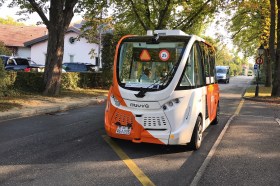
European project
The project is not Geneva’s first driverless bus trial: TPG has been successfully running an automated shuttle on a fixed circular route in Meyrin since 2018.
The Belle-Idée project was selected as part of a four-year European driverless vehicle initiative known as AVENUE (Autonomous Vehicles to Evolve to a New Urban Experience). The European consortium, funded by the European Union’s Horizon 2020 programme, includes pilot schemes in Lyon (France), Luxembourg and Copenhagen (Denmark).
Driverless vehicles in Switzerland
Over the past five years a growing number of other Swiss cities and transport companies have experimented with driverless vehicles on fixed routes (see infobox). This includes Sion, the capital of canton Valais, which in 2016 became the first Swiss city to launch an autonomous bus service in collaboration with Swiss Post.
Apart from the odd minor accident, the results of these trials have been generally positive, with thousands of passengers now regularly taking driverless shuttles.
Swiss ‘pioneer’
The trials have allowed Switzerland “to position itself as a pioneer” in this field, according to Marina Kaempf, spokesperson for the Federal Roads Office.
In most cases the tests were well accepted by the public, with municipalities and cantons developing “realistic” projects to show what the vehicles can do, she tells swissinfo.ch.
But current technologies still don’t allow vehicles that are 100% driverless – i.e. without a safety operator – to be used commercially, the Roads Office says. The exchange of data between driverless vehicles and the outside environment also needs to be improved.
“Longer term, you can imagine driverless buses running more permanently on certain lines when their technologies have been perfected,” says Kaempf. But in the short-term, while autonomous pilot schemes will continue in their current form, the Roads Office is not planning to increase them or turn them into commercial ventures.
Meanwhile, in parallel to these trials, the government is gearing up for the wider use of driverless vehicles on Swiss roads in the coming years. In August, it launched a consultation process to revise the Federal Law on Road Traffic. Part of the proposal aims to improve the legal basis for automated driving and future testing, and to ensure Switzerland can adapt to any international developments in this field.
Huge challenges ahead
Despite Switzerland pushing ahead, not all mobility experts are convinced by driverless buses.
“Maybe they’ll have made big progress in 20 years, but at the moment autonomous buses are a bit of a gadget,” says Vincent Kaufmann, a professor at the Federal Institute of Technology Lausanne (EPFL) and scientific director of the Mobile Lives Forum in Paris.
“What’s interesting is not so much driverless buses, but shared autonomous vehicles, like taxis. We’ll continue to need trams, trains and buses, where you carry 100-200 passengers. But if the shared autonomous vehicle can replace the individual car in the city that’ll be a real gain.”
Driverless challenges – both regulatory and technical – remain huge, raising many questions. Will the introduction of autonomous buses, taxis and privately-owned driverless vehicles just clog up the roads if they are not correctly regulated? How safe will such vehicles be? Will autonomous buses be used downtown or just in suburban areas? How will private data used by autonomous vehicles and passengers be protected? What legal responsibility will public transport firms and drivers have for their autonomous vehicles?
At the technical level, Konstantas feels driverless vehicles still have a long way to go before they can correctly identify objects and anticipate people’s behaviour in the streets.
“Tesla is working on it, but I doubt they’ll be able to do that within 15-20 years,” he says.
He also sees data protection as a big issue. “We’re not allowed to use the data of people walking around in order to learn from it,” he says. “Our system is programmed. It’s not dynamic learning or AI – we don’t have that yet.”
“What we’re doing here is experimental. Is it possible to build the future? We don’t know. Is this going to be useful or not? We don’t know. But we’re going to try.”
On a crisp autumn morning in the Geneva countryside, a bright orange-and-white electric bus is winding through the leafy 36-hectare grounds of the Belle-Idée hospital site.
The bus is trundling along a gravel path when suddenly a patient and a nurse step out from behind a tree. The vehicle brakes sharply, a bell rings out, a “keep your distance” sign flashes at the front and rear. The couple steps back, and the bus continues slowly on its way.
The toy-like shuttle – empty apart from a safety operator and guided by sensors, GPS and radar – is the centrepiece of a unique driverless public transport experiment.
“It’s a world first for a public transport service,” says Dimitri Konstantas, director of the Information Science Institute at the University of Geneva, who is coordinating the project. “Most sites and lines have a fixed route… but here the difference is that there is no route. You can go anywhere.”
New Scientific Article: Autonomous Vehicles toward a Revolution in Collective Transport
/in CentraleSupélec, EU, News, Research /by Dimitri KonstantasAbstract: Autonomous public transport is not a fantasy anymore. At least 92 experimentations with autonomous shuttles for collective transport (ASCTs) have been running in different cities around the world. The deployment of autonomous shuttles opens up a wide range of possibilities in rethinking urban mobility, with a greater focus on users, new services, and reduced urban traffic congestion. The prospective analysis of these possibilities produces original, innovative forecasts with new scenarios for ASPT based on three strong drivers of change, i.e., technological innovation, new mobility behavior, and new business models for public transport. Furthermore, the deployment of ASCTs will considerably modify costs of urban externalities and extend inclusion. The chapter presents how the implementation of autonomous shuttles may revolutionize the public transport.
Autonomous Vehicles toward a Revolution in Collective Transport
Sylvie Mira Bonnardel, Fabio Antonialli and Danielle Attias
Book: Autonomous Vehicle and Smart Traffic
Date: 9 September 2020, DOI: 10.5772/intechopen.89941
Download: Publisher’s version (Gold Open Access)
Demonstrator & Replicator sites
SUBSCRIBTIONS ARE NOW CLOSED
Contact
Prof. Dimitri KONSTANTAS
Full Professor
Information Science Institute – Director
AVENUE projet Coordinator
Uni Battelle – Office 236
University Of Geneva
Route de Drize 7
1227 Carouge
Switzerland
EU PROGRAM

This project has received funding from the European Union’s Horizon 2020 Research and Innovation Programme under grant agreement no 769033.


